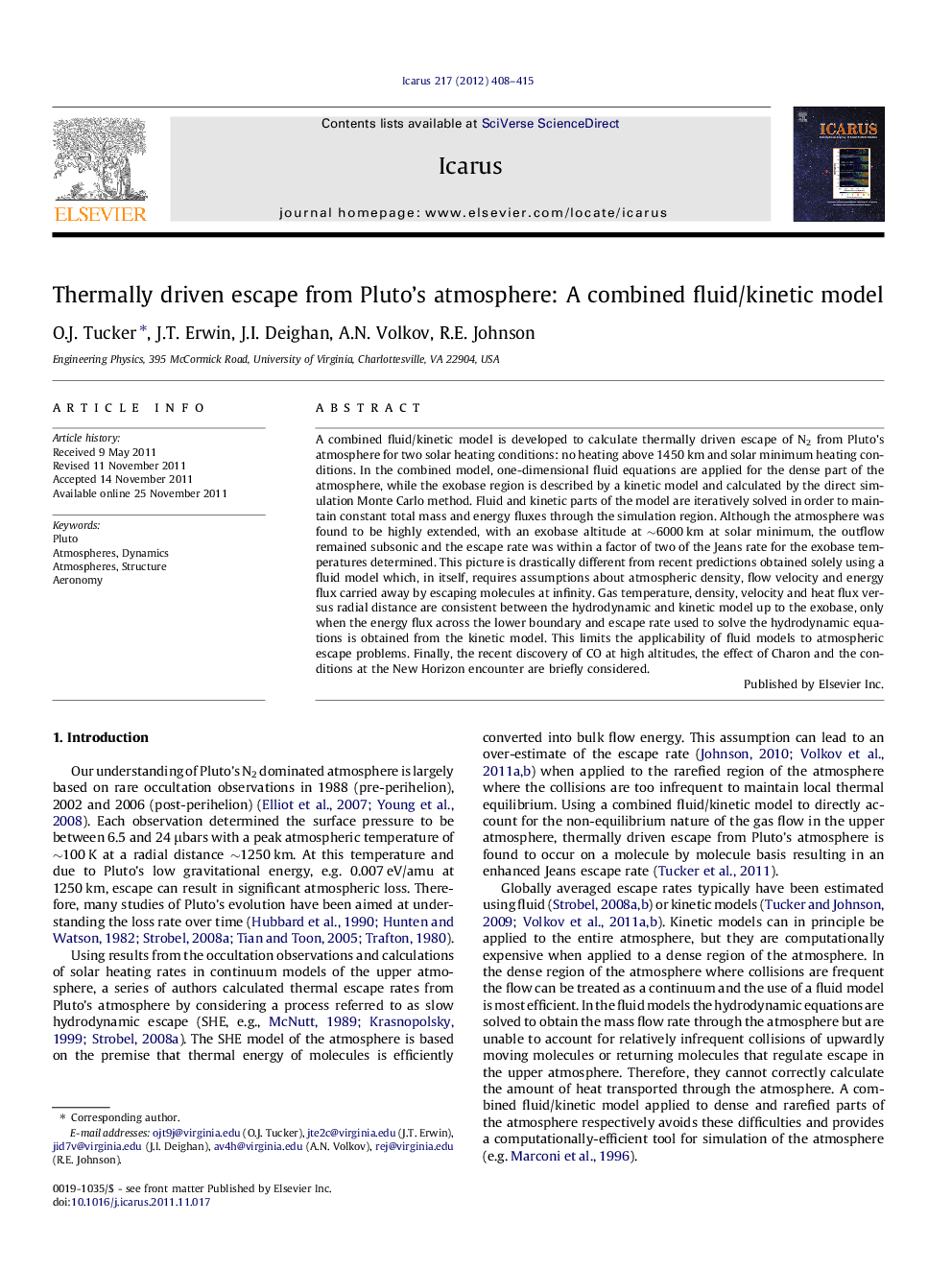| Article ID | Journal | Published Year | Pages | File Type |
|---|---|---|---|---|
| 1773925 | Icarus | 2012 | 8 Pages |
A combined fluid/kinetic model is developed to calculate thermally driven escape of N2 from Pluto’s atmosphere for two solar heating conditions: no heating above 1450 km and solar minimum heating conditions. In the combined model, one-dimensional fluid equations are applied for the dense part of the atmosphere, while the exobase region is described by a kinetic model and calculated by the direct simulation Monte Carlo method. Fluid and kinetic parts of the model are iteratively solved in order to maintain constant total mass and energy fluxes through the simulation region. Although the atmosphere was found to be highly extended, with an exobase altitude at ∼6000 km at solar minimum, the outflow remained subsonic and the escape rate was within a factor of two of the Jeans rate for the exobase temperatures determined. This picture is drastically different from recent predictions obtained solely using a fluid model which, in itself, requires assumptions about atmospheric density, flow velocity and energy flux carried away by escaping molecules at infinity. Gas temperature, density, velocity and heat flux versus radial distance are consistent between the hydrodynamic and kinetic model up to the exobase, only when the energy flux across the lower boundary and escape rate used to solve the hydrodynamic equations is obtained from the kinetic model. This limits the applicability of fluid models to atmospheric escape problems. Finally, the recent discovery of CO at high altitudes, the effect of Charon and the conditions at the New Horizon encounter are briefly considered.
► We calculate thermal escape from Pluto’s atmosphere using a fluid/kinetic model. ► The results differ from those obtained using solely a fluid model. ► The escape rate is within a factor of two of the Jeans rate. ► The energy flux used to solve the fluid equations is from the kinetic model. ► The atmospheric conditions for the New Horizon encounter are considered.
